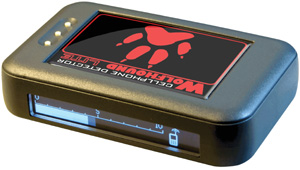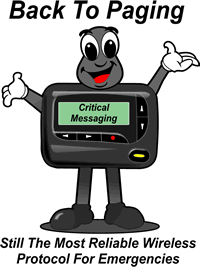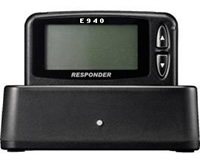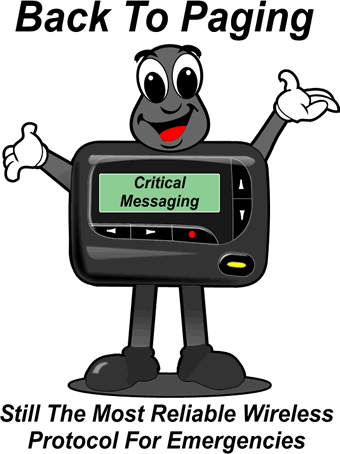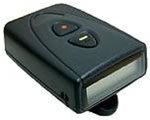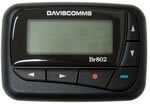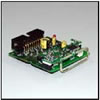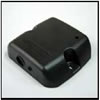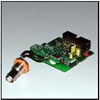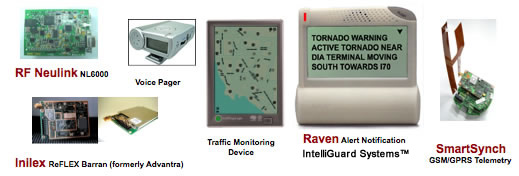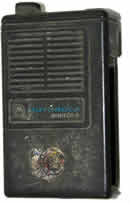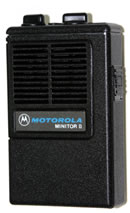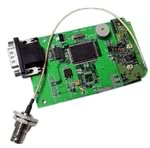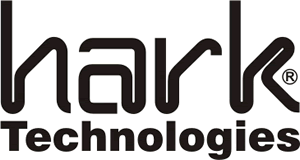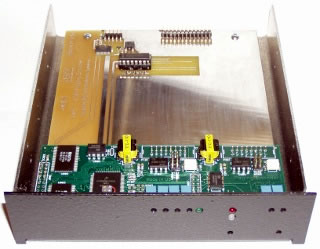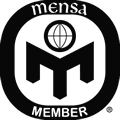BloostonLaw Telecom Update Published by the Law Offices of Blooston, Mordkofsky, Dickens, Duffy & Prendergast, LLP [Portions reproduced here with the firm's permission.] www.bloostonlaw.com |
| Vol. 13, No. 42 | October 27, 2010 |
 Is DSL Dead? According to Telecompetitor, Verizon’s digital subscriber line (DSL) loss now surpasses its access line loss, when measured quarter over quarter. Verizon lost 165,000 DSL lines in the third quarter of this year, or 3.6% of its total DSL lines, Telecompetitor reports. Verizon also lost 594,000 access lines, or 2.2%, in the same quarter. Telecompetitor found that Verizon’s access line loss is level, between 2% and 2.5%, while its DSL line loss is gaining momentum, having increased 75% from the end of 2009 to the end of September 2010. Of course Verizon is relying on its fiber to the premises (FTTP) product, FiOS, for broadband growth, Telecompetitor noted, and it has added 226,000 FiOS Internet subscribers in the third quarter — its best performance since the second quarter of last year. But DSL is hardly dead and buried. Fierce Telecom reports that Nokia Siemens Networks (NSN) is using this week's Broadband World Forum event to demonstrate 825 Mbps over 400 meters of bonded copper cabling and 750 Mbps over 500 meters. Similar to a recent experiment conducted by Alcatel-Lucent, NSN also used a technique that creates virtual—or 'phantom'—channels to supplement the two physical wires that are the standard configuration for copper transmission lines. Fierce Telecom said that according to NSN and other advocates of Phantom DSL, service providers could see a 50-75% increase in bandwidth over existing bonded copper lines. The latest move reflects NSN's near-term strategy to focus on high-speed hybrid copper/fiber-based last mile network technologies such as VDSL2. However, NSN's approach is not unique as it's also being used by both Alcatel-Lucent and Huawei with respective claims of transmitting 300 and 700 Mbps over existing copper. Even though the momentum for FTTP continues to gain ground with Verizon and even large MSOs such as Cox Business, there has been continual momentum from a number of large service providers (AT&T, BT, Qwest, Windstream and Tele2) to leverage existing copper to deliver broadband data and even video, Fierce Telecom said. |
 INSIDE THIS ISSUE - Is DSL Dead?
- BloostonLaw makes case for rural broadband market.
- Rural associations agree on USF, inter-carrier comp. issues; take case to FCC.
- More comments sought on Video Accessibility Act.
- BloostonLaw challenges Allied Wireless joint petition.
- BloostonLaw Licensees oppose proposal for “auxiliary stations.”
|
BloostonLaw Makes Case For Rural Broadband Market BloostonLaw, on behalf of its rural local exchange carrier (RLEC) clients (the Blooston Rural Carriers), has filed comments on the FCC’s Business Broadband Marketplace proceeding, emphasizing that there is a substantial and growing rural business broadband marketplace that is critically important to the existing economies and future economic development of their rural service areas and those of other rural telephone companies. The Blooston Rural Carriers note they are presently providing broadband services to farms, ranches, grain elevators, mines, logging companies, distribution centers, stores, industrial parks, windmill farms and a variety of other manufacturing and service businesses located in their service areas. They need to continue upgrading their broadband-capable facilities and services to support the needs and applications of these existing business customers, as well as to make available the broadband infrastructure required to generate or attract new businesses to their rural service areas in the future, the Blooston Rural Carriers said. These existing and future rural business customers will need broadband capabilities significantly in excess of 4 Megabits per second (Mbps) downstream and 1 Mbps upstream long before 2020 if they are to be able to participate in local, regional, national and international markets. In addition to adequate “last mile” infrastructure, RLECs and their rural business customers must have access to quality and affordable Middle Mile transport facilities in order to connect with the Internet at the broadband speeds required for their desired applications. The Blooston Rural Carriers noted that the U.S. population is likely to increase from 300 million to 400 million during the first half of the 21st Century, and that these additional 100 million people will not be able to be accommodated comfortably and feasibly in the presently congested urban areas of the East Coast, West Coast, Sunbelt and Upper Midwest. However, they have the potential to fuel an economic and demographic resurgence in the Great Plains, the Intermountain West, the Rural South, Appalachia, the Ozarks and other portions of Rural America. If they will continue to have access to appropriate high-speed broadband infrastructure and services, households and businesses will be able to leave crowded and expensive urban areas for the wide open spaces and rich natural environment of Rural America, the Blooston Rural Carriers said. In addition to its traditional farming, ranching and mining industries, Rural America can become home to an increasing number and variety of high-technology services, energy production, manufacturing and warehousing businesses that will create substantial new wealth and help to revive and expand the U.S. economy, the carriers said. They added that the key to this potential renaissance of Rural America is the pre-existence of state-of-the-art broadband infrastructure. If a particular rural area does not have quality high-speed broadband facilities and services in place beforehand, it will not be considered (much less, selected) as the location for the new, expanding or relocating businesses that will be looking for less congested places from which they can participate and compete in the mid-21st Century economy. The Blooston Rural Carriers stated that they understand that the Commission’s proposed “4 megabits per second (“Mbps”) down, 1 Mbps up” rural target is intended for use in determining universal service support for residences in high-cost areas. However, it is likely to have a crippling impact upon rural businesses as well as a significant adverse impact upon rural households. If the National Broadband Plan goal of “affordable access to actual download speeds of at least 100 Mbps and actual upload speeds of at least 50 Mbps” for at least 100 million homes by 2020 is met, urban and suburban businesses will have access to such broadband speeds, and the services and applications that will be developed for them. In contrast, if only “4 Mbps down, 1 Mbps up” facilities are supported in rural areas, many of the businesses therein will not have access to the “100 Mbps down, 50 Mbps up” services and applications used by their urban and suburban competitors, customers, vendors and business partners. Whereas some businesses close to an RLEC central office may be able to obtain a higher-speed fiber to the premises (FTTP) connection, many farms, ranches, mines and other rural businesses are located far outside the population centers and cannot readily be provided with a higher-speed connection when the network between them and the central office has been constructed on a 4/1 Mbps basis. As the Federal-State Joint Board on Universal Service has recognized, RLECs subject to Rate of Return regulation have done an excellent job of utilizing their previous universal service support to upgrade their networks and deploy broadband-capable facilities to most of their rural customers. However, the task of deploying broadband facilities and services reasonably comparable to those in urban areas is far from completed in RLEC service areas and other rural areas. Sufficient universal service support will continue to be necessary if RLECs are to preserve the benefits of their previous infrastructure investment efforts as well as to make the future upgrades necessary to meet the increasing broadband needs and demands of their rural business and residential customers. In addition to broadband-capable “last mile” and inter-office facilities, the Blooston Rural Carriers recognize the need for adequate Middle Mile connectivity between their networks and the Internet, particularly if they to be able to provide the broadband speeds, services and applications required by their business customers. They are concerned: (a) that they will not be able to obtain adequate Middle Mile connectivity from unrelated carriers to transport increasing amounts of broadband traffic to and from the Internet at higher and higher data speeds; and (b) that, even if it is available, such higher-capacity Middle Mile connectivity will be so expensive that they will not be able to provide the broadband speeds, services and applications required by their customers at rates that are affordable and reasonably comparable to those in urban areas, the carriers said. They noted that some RLECs participate in ventures such as statewide equal access networks and regional fiber transport networks that furnish some or all of the Middle Mile connectivity for their broadband services. However, many RLECs currently rely upon Regional Bell Operating Company (RBOC) or other unrelated third party networks to transport their broadband traffic over lengthy routes (often 40-to-100 miles) to and from the closest Internet gateway. At the present time, many of these Middle Mile facilities are comprised of aging T1 and DS3 facilities, which are increasingly becoming bottlenecks and preventing RLECs from providing their customers with broadband services and speeds that would otherwise be attainable over RLEC “last mile” networks. Whereas Section 201(a) imposes a duty upon carriers to furnish communication service upon reasonable request therefore, the carriers said it is not clear at this time what obligations and incentives the larger carriers will have to make the substantial investments necessary to deploy more fiber and to upgrade their existing T1 and DS3 Middle Mile facilities to OC3, OC12 and higher capacities as broadband traffic volumes grow. As Middle Mile connectivity needs increase (and some Blooston Rural Carriers estimate that their Middle Mile capacity needs are increasing rapidly by 33-to-50 percent or more per year), the availability of, and access by RLECs to, sufficient Middle Mile capacity is going to become an increasingly serious problem that will restrict the broadband speeds, services and applications available to their rural business and residential customers. In addition, the carriers said the cost of Middle Mile connectivity is becoming increasing onerous for RLECs. Middle Mile connectivity costs appear to range from $45 per Megabit per month to $600 per Megabit per month depending upon factors such as geography, terrain, demographics and distance to the Internet gateway (with many RLECs paying $100-to-$200 per Megabit per month), and appear to constitute about 20-to-40 percent of the broadband service costs of the typical Blooston Rural Carrier. The carriers expect that the total Middle Mile transport costs of RLECs will increase significantly as broadband service demands evolve and expand and broadband traffic volume grows. As the broadband network develops, sufficient federal High Cost support is going to be needed to help RLECs and other small rural carriers recover the substantial and increasing costs of Middle Mile connectivity, the carriers said. Without such additional support, they will be unable to provide their rural business and residential customers with broadband services at rates that are affordable and reasonably comparable to those charged in urban areas. BloostonLaw contact: Gerry Duffy. Rural Associations Agree On USF, Intercarrier Comp. Issues; Take Case To FCC The four major rural telecommunications trade associations have told the FCC they are working together to develop effective solutions to rural Universal Service Fund (USF) and intercarrier compensation (ICC) issues. The National Telecommunications Cooperative Association (NTCA), Organization for the Promotion and Advancement of Small Telecommunications Companies (OPASTCO), Western Telecommunications Alliance (WTA) and Independent Telephone & Telecommunications Association (ITTA) informed FCC staff that universal service and intercarrier compensation reform should take place at the same time, because they are so extensively interrelated. The associations have agreed on the following general principles and are working on more detailed proposals: Principles of Universal Service and High Cost Support for Broadband: 1. The National Broadband Plan (NBP) recognizes that supplemental support mechanisms will be necessary to achieve greater national broadband deployment than private investment alone would support. Policy-makers must establish clearly and affirmatively their commitment to provide the necessary resources. 2. The Act's Universal Service principle of "reasonably comparable" should apply to broadband. 3. An evolving definition of broadband should be reevaluated at intervals that are sufficiently frequent to ensure that outcomes based upon that definition do not become outdated or functionally insufficient. 4. The size of the USF is best controlled by rational collection and allocation policies, rather than an arbitrary cap that is not related to or precludes recovery of actual costs incurred in delivering supported services. 5. Contribution policies should compel those that rely on broadband networks for the provision of their services to support those networks. Regulatory parity, administrative ease, and equitable distribution of responsibility must attend vital and much needed reform of USF contribution mechanisms. 6. Eligibility for support should be based upon the cost of providing service, and the demonstrated ability to meet defined service standards, including, but not limited to, provider-of-Iast-resort obligations. The supported broadband provider must also provide voice service throughout the area. 7. Providers of last resort should be able to recover the costs associated with delivering affordable broadband services through federal USF mechanisms that are tailored for the rural markets in which those services are offered and which offer providers appropriate incentives for investment, i.e. rate-of-return or incentive regulation, as applicable. 8. Limitations on the number of supported providers should apply in any geographic region. 9. A reasonable transition must incorporate predictable and sufficient support for providers and acknowledge reasonable expectations associated with prior network investments. 10. The FCC should act now to address discrete intercarrier compensation reform issues, the resolution of which can serve as a prelude to comprehensive reform. Action on these items will provide momentum for further reform, increase provider stability by enabling cost recovery, and help in determining more precisely the amount of any additional cost support that may be required to support the public policy goal of universal broadband service. Principles of Intercarrier Compensation Reform: 1. The FCC's efforts to reform universal service are best served by taking simple steps to ensure that ICC is not a "moving target." The FCC should establish a solid foundation for ICC, and then determine how those ICC revenues might be incorporated within broader efforts at universal service reform. 2. Each carrier should be given the option to cap its interstate switched access rates and then unify its interstate and intrastate switched access rates during an appropriate transition period. Those carriers opting for capped and unified rates would recover the resulting reductions in ICC through a combination of reasonable end-user rates and incremental federal universal service support. 3. Reasonable end-user rates would be determined via a federal benchmark that includes actual service rates, interstate and intrastate subscriber line charges, intrastate universal service support, and mandatory extended area charges. 4. The FCC should act now on discrete ICC issues, the resolution of which can serve as a prelude to comprehensive reform. 5. Action on these ICC framework items will provide momentum for further reform, increase provider stability by enabling appropriate cost recovery, and help in determining more precisely the amount of any additional cost support that may be required to support specific broadband availability objectives. 6. The FCC could revisit this reformed ICC regime once a new universal service system is developed and implemented to determine whether further ICC changes are needed to achieve longer-term universal service objectives. BloostonLaw contacts: Ben Dickens, Gerry Duffy, and Mary Sisak. More Comments Sought On Video Accessibility Act The FCC recently has been seeking comment on the application of the recently enacted Twenty-First Century Communications and Video Accessibility Act of 2010 (BloostonLaw Telecom Update, October 20, and separate story below). The law’s provisions are designed to ensure that individuals with disabilities have access to emerging Internet Protocol-based communication and video programming technologies in the 21st Century. The Accessibility Act will impose new obligations on most of our clients, who should actively participate in the FCC’s proceeding to ensure that such obligations are reasonable (especially for small and rural carriers who cannot spread the resulting costs over a large customer base). It is likely that the regulations that come out of the FCC’s rulemaking will be enforced in a fashion similar to the Hearing Aid Compatibility (HAC) rules, which have resulted in numerous expensive fines being imposed on service providers. The Commission notes that the Accessibility Act adds new Sections 716, 717, and 718 to the Communications Act. New Section 716 requires the Commission, within one year after enactment, to promulgate rules providing persons with disabilities access to advanced communications services and the equipment and networks used for such services. This Section builds upon the policy objectives set forth in Section 255 of the Communications Act, which was added in 1996. As a result, the FCC seeks comment on the meaning of key provisions in new Section 716, as well as ways to implement record-keeping obligations imposed by Section 717 on entities subject to the new regulations. In addition, the FCC seeks comment on the obligation imposed by new Section 718 on manufacturers and service providers to provide access to Internet browsers in telephones used with public mobile services by blind or visually-impaired individuals. SECTION 716 REQUIREMENTS: Section 716 requires providers of advanced communications services and manufacturers of equipment and software used with those services to ensure that their equipment and software offered for sale after the effective date of the rules promulgated by the Commission will be accessible to and usable by persons with disabilities, unless not achievable. Without going into great detail, there are definitional changes regarding “advanced communications services,” and the FCC seeks comment on the new definitions and their implications for persons with disabilities. The FCC also notes that the Accessibility Act adds the new term “achievable” to gauge compliance with the newly created Sections 716 and 718, defining this to mean “with reasonable effort or expense.” In determining whether the requirements of a provision are “achievable,” the Commission must consider the following factors: (1) the nature and cost of the steps needed to meet the requirements of this Section with respect to the specific equipment or service in question; (2) the technical and economic impact on the operation of the manufacturer or provider and on the operation of the specific equipment or service in question, including on the development and deployment of new communications technologies; (3) the type of operations of the manufacturer or provider; and (4) the extent to which the service provider or manufacturer in question offers accessible services or equipment containing varying degrees of functionality and features, and offered at differing price points. The FCC seeks comment on how best to provide further guidance on this new definition. Specifically, how does the “achievable” standard compare to the “readily achievable” standard set forth in Section 255 of the Communications Act? What does “reasonable effort and expense” mean in the context of providing access to advanced communications equipment and services? What is the best way of evaluating the extent to which a service provider or manufacturer is offering a variety of accessible services and equipment containing varying degrees of functionality and features, and offered at differing price points? Additionally, the Commission seeks comment on issues related to industry flexibility, compatibility, network features and functions, performance objectives, accessibility of information content. SECTION 717 REQUIREMENTS: Section 717 requires the Commission to adopt rules that facilitate the filing of formal and informal complaints alleging a violation of Sections 255, 716, or 718 and to establish procedures for enforcement actions by the Commission with respect to such violations, within one year of enactment of the law. Section 717 also requires manufacturers and service providers subject to Sections 255, 716, and 718 to maintain records of efforts taken to implement the requirements of these Sections. Such records are to be kept in the ordinary course of business and must include: (1) information about the manufacturer's or provider's efforts to consult with individuals with disabilities; (2) descriptions of the accessibility features of its products and services; and (3) information about the compatibility of such products and services with peripheral devices or specialized CPE commonly used by individuals with disabilities to achieve access. The FCC seeks comment on this requirement, including the types of records that should be maintained for each of these categories of information. The FCC also seeks comment on possible enforcement procedures. SECTION 718 REQUIREMENTS: Section 718 provides that if a manufacturer includes an Internet browser in a telephone used with public mobile services, or if a provider of mobile services arranges for the inclusion of a browser in telephones sold to customers, the manufacturer or provider must ensure that the functions of the browser are accessible to and usable by individuals who are blind or have a visual impairment, unless doing so is not achievable. A manufacturer or service provider may comply with this requirement by incorporating such access into the telephone or service itself, or may rely on third party applications, peripheral devices, software, hardware, or CPE that is available to individuals with disabilities at nominal cost, and that individuals with disabilities can access. The FCC seeks comment on the extent to which the requirements of Section 718 affect how to interpret and implement any of the requirements in Section 716. Comments in this CG Docket No. 10-213 proceeding are due November 22, and replies are due December 7. BloostonLaw contacts: Ben Dickens, Gerry Duffy, Cary Mitchell and Mary Sisak. BloostonLaw Challenges Allied Wireless Joint Petition BloostonLaw, on behalf of several rural incumbent local exchange carriers (rural ILECs), has filed an Opposition to the Joint Petition for Reconsideration submitted by Allied Wireless Communications Corp., et. al., on October 4, 2010. The Opposition focuses primarily upon Joint Petitioners’ challenge to that aspect of the Corr Wireless Order which refused to redistribute reclaimed high cost amounts from Verizon Wireless and Sprint. The Joint Petitioners argue that the high cost amounts gained (by the acquisition-related roll-backs applicable to Verizon Wireless and Sprint) simply should be redistributed to remaining competitive eligible telecommunications carriers (ETCs). The rural ILECs said this argument should be rejected. Such a result would constitute unwise public policy and, in any event, the Corr Wireless Order is lawful on this score. Although the Joint Petitioners level charges concerning the Commission’s processes in refusing to increase Joint Petitioners’ high cost fund receipts, the rural ILECs said the ETCs essentially want to unwind the Commission’s earlier adopted interim cap. BloostonLaw pointed out that “the mathematics of their requested relief is inescapable. The interim cap was adopted in 2008 to address growth in the high cost fund by competitive ETCs, characterized by the U.S Court of Appeals as having ‘sky-rocketed’ from $15 million in 2001, to almost $1 billion in 2006. Indeed, in imposing the interim cap order, only applicable to competitive ETCs, the FCC described the high cost fund as in crisis, subject to ‘explosive growth’ and warranting an ‘emergency cap’ for competitive ETCs. Both Verizon Wireless and Sprint represent $530 million of the overall burden placed upon the high cost fund. The redistribution of over ½ billion U.S. dollars annually to the Petitioners and their ilk, constitutes an end run and would shatter the impact of the cap as to them.” They added that the agency seeks to strike an appropriate balance between the interests of widely dispersed consumers with small stakes and a concentrated interest group seeking to increase its already large stake. The rural ILECs said, “The Court went on to note the deference due the Commission, particularly in light of the wireless ETCs’ failure to include any cost data to show that the wrong balance had been struck by the Commission. Moreover, the Court noted, the ‘…CETCs receive well in excess of their costs’ under the identical support rule, and thus enjoy ‘a significant advantage over ILECs under the current support system’. The Court further noted that ‘…it is CETC support, not ILEC support that is exerting pressure on the USF and therefore poses the more direct threat to the fund’s sustainability.’ Finally, the rural ILECs participating in this Joint Opposition note their agreement with one aspect of the Joint Petition: “The Commission should clarify here, or elsewhere, that legacy Verizon lines should not be added to Alltel’s line count, as Verizon Wireless evidently intends through several state proceedings,” they said. BloostonLaw contacts: Ben Dickens, Gerry Duffy, and Mary Sisak. Microwave Licensees Oppose Proposal For “Auxiliary Stations” BloostonLaw, on behalf of several licensees of point-to-point microwave radio stations (the BloostonLaw Licensees), have opposed a portion of the Commission’s WT Docket No. 07-121 rulemaking proposal that seeks to allow the licensing of “auxiliary stations” in the already-crowded microwave bands. This proceeding has its genesis in a filing by Wireless Strategies, Inc. (WSI) in February of 2007, asking the Commission for a declaratory ruling that its proposed operations were consistent with the Commission’s Rules in Part 101 as then written. WSI’s proposal was to use lower gain antennas than are typically used in point-to-point operations that had sufficient side-lobe radiation to allow the main fixed station to communicate effectively with multiple fixed stations (now termed “auxiliary stations” by the FCC) situated all along the side lobes of the antenna – basically a point-to-multipoint operation. In effect, the licensee would be reusing its coordinated frequencies over a much larger area than in the typical point-to-point operation, thereby creating a quasi-geographic-area license. The Commission’s Notice of Proposed Rulemaking and Notice of Inquiry (NPRM) in these proceedings denied the petition for a declaratory ruling, finding that WSI’s proposal is inconsistent with the plain wording of the Commission’s rules. Nevertheless, the Commission found that the concept was worthy of further consideration and instituted the WT Docket No. 07-121 proceeding to consider changes to Part 101 to allow operation as contemplated by WSI. While reserving judgment on the ultimate outcome, the Commission suggested certain changes to the Part 101 rules for the purpose of allaying the concerns that had been expressed by those opposing WSI’s petition. The BloostonLaw Licensees are concerned that WSI’s novel approach to licensing in Part 101 may result in harm to existing microwave licensees, and/or deplete the availability of clean spectrum in the future. The BloostonLaw Licensees pointed out the objections of Comsearch, a leading microwave frequency coordinator and designer of microwave systems, and other microwave system designers and equipment manufacturers, who have done exhaustive engineering studies and have concluded that the proliferation of WSI’s mode of operation of point-to-multipoint systems cannot be accommodated under Part 101 without substantially increasing the potential for interference to existing point-to-point networks and exacerbating the shortage of spectrum in the future. Moreover, the public interest arguments put forth by WSI as justifying its mode of operation do not appear to be meritorious. Thus, WSI claims that when the Commission licenses point-to-point links, there are large areas in the vicinity that cannot be licensed to others because of interference concerns. WSI reasons that allowing auxiliary stations makes more efficient use of the frequency spectrum by allowing multiple stations to coexist in the vicinity. However, Comsearch has shown that this concept is not borne out by the facts. For example, Comsearch is on record as having established that in areas with high frequency density, such as Los Angeles, thousands of licensed point-to-point links are able to coexist in close proximity to each other on an interference-free basis under the current rules in Part 101. This is possible because the Commission’s current licensing scheme requires the use of minimum power and high-gain antennas with narrow beamwidths, thereby limiting side-lobe radiation. This allows for maximum utilization of the microwave frequency spectrum. Under the licensing scheme now proposed by the Commission, would-be applicants such as WSI and its customers would have an incentive to apply for the maximum power permitted under the Commission’s rules and, with the proposed relaxation of the antenna performance standards, modulation and minimum path length requirements, the interference potential of stations thereby licensed may be expected to increase substantially. Although the Commission is proposing that auxiliary stations may not cause any increase in interference to other licensed services, this does not address how the proliferation of these auxiliary stations would deplete the availability of microwave spectrum for conventional point-to-point operations. The proposed rules therefore appear to promote inefficient utilization of the microwave frequency spectrum. Instead of stations with narrow RF propagation and clearly defined minimum interference potential, the microwave environment may be expected to degenerate into a sort of wide-area conglomeration of stations with inefficient antenna performance characteristics and poorly-defined interference parameters – tantamount to multiple quasi-geographic-area licenses. Clearly, this is contrary to the public interest. BloostonLaw contacts: Hal Mordkofsky, John Prendergast, and Richard Rubino. FCC MOBILE FORECAST SEES “SPECTRUM CRUNCH”: The FCC has released a white paper titled, “Mobile Broadband: The Benefits of Additional Spectrum.” According to the FCC, the National Broadband Plan recognized the exponential growth of mobile data usage and recommended that the Commission make available 500 megahertz (MHz) of new spectrum for wireless broadband within ten years, including 300 MHz for mobile flexible use within five years. In addition, the President directed in a June 28, 2010, Executive Memorandum that 500 MHz of new spectrum be made available for mobile and fixed broadband use. Spectrum is a national resource used for all forms of wireless communication, including the use of smartphones. Data usage over wireless networks is rapidly increasing as more consumers surf the web, check email, and watch video on mobile devices, the FCC said. Some of the key findings in the white paper are: - Within the next five years, the spectrum deficit is likely to approach 300 megahertz.
- This spectrum crunch will be driven by significant growth of mobile broadband traffic, on the order of 35 times recent levels.
- Mobile broadband growth is likely to outpace the ability of technology and network improvements to keep up by an estimated factor of three.
- Meeting this need may create $120 billion in spectrum value, with hundreds of billions more in total value to the economy.
The National Broadband Plan noted that making new spectrum available has historically taken between 6 and 13 years, according to the FCC. BloostonLaw contacts: Hal Mordkofsky, John Prendergast, and Cary Mitchell. TIME WARNER CABLE SEEKS DECLARATORY RULING ON “NEGATIVE OPTION BILLING”: Time Warner Cable Inc. (TWC) has filed a petition requesting that the FCC issue a declaratory ruling providing guidance on the obligations of cable operators and the proper interpretation of the prohibition on negative option billing contained in Section 623(f) of the Communications Act, and implemented in Section 76.981 of the Commission’s Rules. Section 623(f) states that “a cable operator shall not charge a subscriber for any service or equipment that the subscriber has not affirmatively requested by name” and is designed to prevent consumers from being billed for cable services or equipment they never ordered. TWC is the defendant in a putative class action lawsuit pending in state court in California in which the plaintiffs contend that TWC’s California cable systems have violated the prohibition on negative option billing. At issue is whether Section 623(f) is satisfied by a subscriber’s “affirmative assent” and whether TWC’s ordering process complies with the negative option billing restriction of Section 623(f). Comments in this MB Docket No. 10-215 proceeding are due November 9, and replies are due November 19. BloostonLaw contacts: Ben Dickens, Gerry Duffy, and Mary Sisak. 21st CENTURY ACCESSIBILITY LAW EXPANDS FCC’s HAC AUTHORITY: In response to a recent Further Notice of Proposed Rulemaking (FNPRM) on wireless hearing aid compatibility (HAC) matters, a group of BloostonLaw’s wireless clients this week filed comments with the FCC urging it not to extend requirements for in-store testing of hearing aid-compatible handsets to independent retailers. The comments noted that many independent service providers in rural America are small businesses that can only afford to maintain a limited number of company-owned or operated retail outlets. These entities instead rely heavily on having a robust network of local retailers and independent distributors (which are often themselves small businesses) for the sale and marketing of their wireless products and services. The extension of HAC in-store testing requirements (and the prospect of FCC enforcement/fines) to these entities will provide a significant disincentive to “mom and pop” businesses and individuals that may sell only a small handful of wireless devices each month, but that taken together may represent a significant amount of a rural carrier’s new business. In the absence of having a broad and far-reaching independent sales network, small service providers would lose one of the few distinct advantages they have over nationwide carriers – their strong ties to local businesses and rural communities. Not only would the competitive prospects of small carriers be diminished, but consumers in rural areas (both hearing impaired and not) would almost certainly have diminished access to wireless products and services, since fewer retailers will choose to offer wireless handsets if this makes them subject to FCC regulation. The BloostonLaw comments also addressed the impact of the Twenty-First Century Communications and Video Accessibility Act of 2010, which was signed into law by President Obama on October 8, 2010. Section 102 of this law extends HAC requirements to customer premises equipment “used with advanced communications services that is designed to provide 2-way voice communications via a built-in speaker intended to be held to the ear in a manner functionally equivalent to a telephone.” Thus, the Communications Accessibility Act of 2010 appears to expand the Commission’s regulatory authority to impose HAC substantive and reporting requirements on non-interconnected communications services, such as non-interconnected VoIP. While acknowledging that the public interest is served by providing reasonable accommodation for the hearing impaired, the BloostonLaw comments pointed out that the intent of the 1988 HAC Act (as amended by the Communications Accessibility Act of 2010) is to ensure reasonable access to telephone service by persons with hearing loss. While the Communications Accessibility Act of 2010 directs the Commission to establish HAC requirements for “all customer premises equipment used with advanced communications services that is designed to provide 2-way voice communications via a built-in speaker intended to be held to the ear in a manner functionally equivalent to a telephone,” the comments noted that the definition of “advanced communications services” for purposes of this legislation is specifically limited to: (A) interconnected VoIP service; (B) non-interconnected VoIP service; (C) electronic messaging service; and (D) interoperable video conferencing service. Therefore, while many VoIP services are covered by the new law, communications services that do not involve the use of a telephone, such as walkie-talkies, non-CMRS “push to talk” transceivers and similar non-telephone radio communications devices, remain exempt from the HAC requirement. The BloostonLaw comments also urged the FCC not to interpret its expanded regulatory authority as allowing it to extend HAC regulatory requirements to non-interconnected systems that are used solely for internal communications and/or for-profit private land mobile services because public safety or dispatch operations are not viewed by the public as functionally equivalent to telephone service. Reply comments in this proceeding (WT Docket No. 07-250) are due November 22, 2010. BloostonLaw contacts John Prendergast and Cary Mitchell.  This newsletter is not intended to provide legal advice. Those interested in more information should contact the firm. | 


